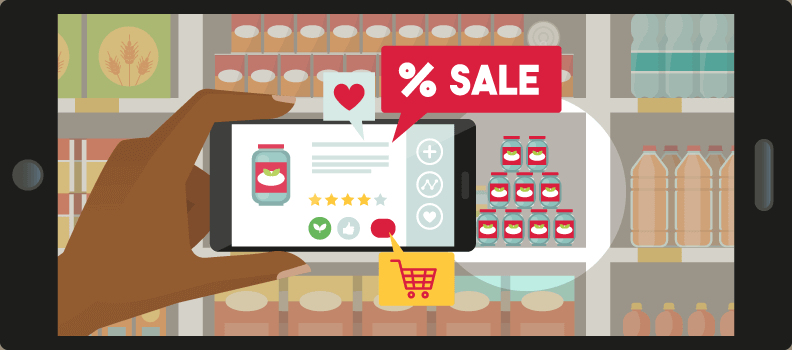If your sales are staying stagnant, that can only mean one thing—a really big problem!
Slow sales—or no sales—can be a concern for many companies. And perhaps an even bigger source of frustration is that there are so many reasons why your sales team may not be converting leads into sales.
We do know that one thing is proving true. The old-school sales development standard of phone calls and “just checking in” emails is no longer working well for most businesses.
So, what will?
Before we dive into that, let’s start with simple definitions of both “leads” and “sales development.” Then we’ll go into 5 opportunities every sales development rep can utilize to build relationships and increase revenue. And finally, we’ll discuss how you can ensure these development efforts gain the most traction.
What is a lead?
A lead is simply someone who may be interested in your products or services. In general, there are three different types of leads that a sales team will run into:
- Cold leads: These individuals have shown zero interest in your business, its products, or its services. Maybe they don’t even realize that you exist. Or they do, but they are ignoring your contact attempts.
- Warm leads: The individuals have interacted with your company. In all likelihood, they gave you their contact information in exchange for free information like a newsletter.
- Hot leads: These individuals are showing a true interest in making a purchase. They have clearly expressed their needs and they are ready to buy what you’re selling.
What is sales development?

In its most simple form, sales development is a process your team relies upon to build their pipeline of leads. In an ideal sales team, a sales development representative or SDR does the “warming” of a lead through outreach and follow up before sending a lead to a sales representative who is responsible for trying to close the deal.
For many teams, the reality is that the sales development rep and the sales rep are the exact same person. As a result, even the strongest sales development initiatives will run into complications depending on the strengths and weaknesses of individual team members hired to do this dual job.
5 opportunities for sales development improvement
It’s important to give your sales team what they’ll need to be successful. But what that looks like is going to vary by team member. Still, it’s good to have a starting point.
So here are 5 opportunities every sales development rep can utilize to build relationships and increase revenue:

Fewer calls, deeper connections
Quality over quantity is where today’s successful sales development reps are having the most luck. And this is tricky because it’s counterintuitive for most sales people for whom live by phrases like, “One yes for every ten no’s.” But in spending more time forming a connection with fewer prospects, sales development reps lend a level of value that is becoming increasingly needed to land the sale.

Active listening
One thing many sales development representatives consider themselves to be good at—talking. Yet any chatbot can work from a script and push products or services someone doesn’t even need. So, if you’re fortunate enough to have a potential customer take your call, then do them the service of truly listening to their needs. By gathering information from a person about their biggest pain points instead of going off of a checklist, a sales development rep has the power to provide outstanding solutions to a problem—not just hit sales targets. And that is what builds loyalty.

More touchpoints
Also referred to as a “contact” a touchpoint is a way to reach a sales prospects like calls, emails, or face-to-face meetings. On average, it takes 18 touchpoints to elicit a first response from a prospect. Now consider that 80% of sales require 5 follow-up calls after the meeting. And add to that, that 44% of sales reps give up after 1 follow-up. Whether your sales team doesn’t want to “bug” a prospect or they’ve afraid of overdoing it, the data shows that there are benefits to doing more. But that doesn’t mean connections should be empty gestures, bringing us to #4.

Valuable collateral
Tricky because it requires a good relationship with your marketing department, the simple truth is that assets bring value to your potential customers and provide a great excuse for your sales team to “just follow up.” Not only can good collateral spark interest and conversation, it can also help your sales team move prospects further into the sales funnel.

An organized CRM
Customer Relationship Management software is a must for successful sales development reps. A united CRM should be available across the team and should have a documented process in place so everyone can track and identify ideal customers.
Stop focusing on the (revenue) numbers
Let’s say that your sales development team has been coached through these opportunities to deepen relationships with prospects. Yet they still continue to underperform in meeting their revenue goals. How exactly can you help your team find the success they so desperately crave?
Let’s first call attention to this: Gone are the days when potential customers only had one or two routes to finding a solution. The internet provides your prospects with hundreds, thousands, and perhaps even millions of solutions with the click of a button. It’s more difficult than ever to capture someone’s attention. And more difficult still to turn that attention into a sale.
Which is why many companies rely on expanded sales teams with a separation between sales development and sales.
Now, here’s the bottom line: At the end of the day, sales teams have zero control over whether or not someone signs on the dotted line.
They do control their actions, though.
And actions are the true heart of sales development!
So, creating KPI’s or Key Performance Indicators based on the above sales development opportunities may help relieve some sales pressure of the modern day—resulting in more successes.
Some examples of action-based KPIs that a sales development rep might set based on the above opportunities include:
- X number of phone calls made per day
- X number of follow-up conversations attempted per week
- X number of attempted touchpoints per customer per day
- X number of assets sent to “cold” leads







